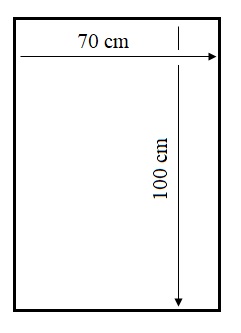Instructions for preparing posters
- A science poster should be characterized by a concise and meaningful presentation
of information (description of research and results obtained), in a simple, accessible
and understandable form (both text and graphic). The presentation method should encourage further detailed familiarization with the topic and discussions with the author
of the poster.
- Posters should be prepared and printed on your own.
- The posters can be placed one hour before the set date of the poster session, on special boards, using double-sided adhesive tapes. Boards and adhesive tapes will be available by the Session organizer.
- Posters should be removed from the boards after the poster session. not removed posters will be thrown by the Session organizer
Poster dimensions:
B1 format: 70 cm (width) × 100 cm (height) ‒ vertical orientation.
 POSTERS WITH DIMENSIONS OTHER THAN THOSE PRINTED ABOVE WILL NOT BE PRESENTED ON THE BOARDS.
POSTERS WITH DIMENSIONS OTHER THAN THOSE PRINTED ABOVE WILL NOT BE PRESENTED ON THE BOARDS.
Layout of poster content.
- TITLE (necessary data: title, author / authors, institution). Photos of the Authors are welcomed.
- AIM OF THE STUDY
- METHODS
- RESULTS
- CONCLUSIONS
- LITERATURE
Each part of the poster should contain information given in a compact and accessible form, keeping the most important information regarding the subject and aim of the research and the results obtained in the study.
Text, font, colors, graphics.
A properly prepared poster should enable reading of all content from a distance of not less than 1.5 m. The layout of all elements of the poster, text and graphics should be, logically arranged and transparent, to allow free "movement" between subsequent parts of it. We presented as column/block system from the upper left corner and further down, subsequent columns/blocks of text and graphics.
It is suggested to use the following font sizes:
- for the main text ‒ not less than 26 points,
- for descriptions ‒ not less than 18 points,
- for headings ‒ in bold and correspondingly larger than for the main text.
To highlight important parts of the text, you can use bold, underline, italics, or a different color or typeface.
Colors and graphic elements (e.g. borders) should be used to highlight the most important elements and increase the aesthetic values of the poster.
All tables and graphics should be labelled with descriptions and/or titles.
Titles should be placed above the tables.
Under the schemes, diagrams, diagrams, photographs and other graphics captions should be placed.
